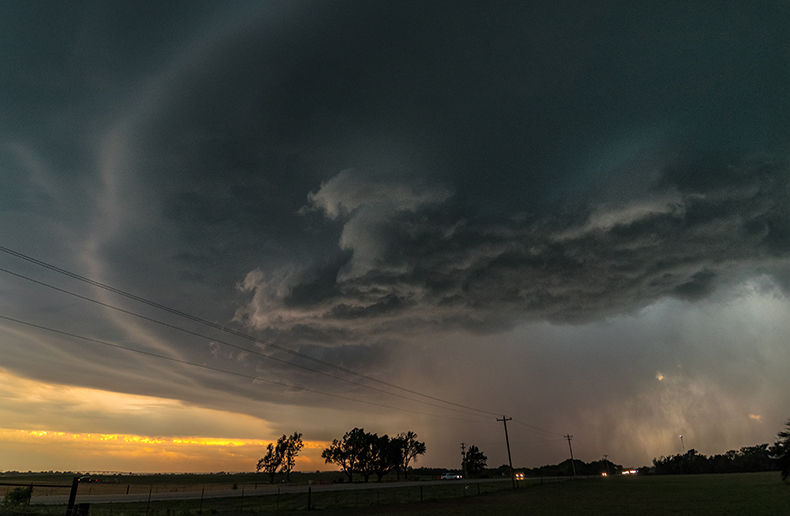The tax-free savings account (TSFA) program has just got underway, but many Canadians are already contributing the maximum. Although complete industry-wide data are lacking, it looks like financial advisors will have to act fast if they want to prevent their clients from opening a TSFA at a bank.
TFSA's officially took effect on Jan. 1, 2009. Since then, financial institutions have had their hands full. The success they projected at year-end materialized well beyond expectations, sources interviewed by The Insurance Journal report.
"We have opened 375,000 TFSAs so far," says Peter Aceto, CEO of ING Direct. He puts the total amount of contributions collected in ING Direct TSFA accounts at $1.3 billion. This means that since early January, each contributor deposited almost $3,500 on average.
"A whole bunch of contributors have already invested the maximum amount allowed this year, which is $5,000, Mr. Aceto adds. "Others have started an automatic savings program. They are making the right choice in terms of savings and discipline, but it obviously skews the average amount down."
Gordon Gibson, Senior Vice President and Managing Director, Retail Services at National Bank Financial (NBF), confirms that the average amount is $4,700 per TFSA in the banking network, but did not have the figure for NBF.
Danielle Coutlée, manager, Sales Strategy and Support at RBC Royal Bank, says that the average amount in TFSAs at the bank is $4,200. She explains that the new account is very popular for two main reasons: the amounts are accessible at any time without penalty, and assets accumulate tax-free. "There are no cons to this account, just pros."
At Standard Life Canada, the average is $3,300 per TSFA, says Marie-Chantal Viau, Senior Consultant, Investment Products Management. "The total amount currently held in TFSA accounts has reached $4 million at Standard Life," she points out.
Jeff Carrique, Assistant Vice President Marketing & Communication for Wealth Management at Manulife Financial did not disclose any figures, but mentioned that the clientele's response has been very favourable. "We have seen a lot of activity, probably more than what we quite frankly expected, so it's been very positive," he says.
The race to woo clients and coax them into opening TSFAs is definitely on. Assets held in tax-free savings accounts could reach $20 billion this year alone, a CIBC Capital Markets study published in September forecasts.
Education required
Slightly more than four months after the tax-free savings account was launched, financial institutions and advisors still have a monumental task ahead: educating the clientele about the advantages of this new product. "There certainly are some misunderstandings or misconceptions still among the population regarding the TFSA. Think about the RRSP, we've had this account for over 50 years and there are still many Canadians who have never taken advantage of it or don't understand quite how it works", says Tina Di Vito, Director, Retirement Strategies, BMO Financial Group.
Advisors thus play a pivotal role. "There is a lot of education to be done and our advisors are there to help clients with this. It's a great opportunity to have a discussion about their clients' financial plan", says Shawn Kauth, Assistant Vice-President, Wealth Product Development at Sun Life Financial.
Gordon Gibson, of NBF, explains that the TFSA is an excellent reason to contact all your clients and review their files, needs, objectives and investor profile. "The TFSA is an ideal tool to seek out additional information on the client because you have to take the analysis further to determine how to integrate the account in the client's financial plan," he continues.
It is better to be proactive and contact clients as quickly as possible, says Lévis, Quebec-based Marc Vallée, a financial planner with Centre Financier Classique. Financial planners are probably missing out on prime business opportunities if they wait for the clients to call. "In general, clients have heard about the TFSA, but many are not interested in exploring it further, although they could easily use it to their advantage," he points out.
Jeannette Brox, a Toronto-based certified financial planner at Investors Group, says that her clients are not confused at all by the TFSA, for one simple reason: she already told them that this new product would let them accumulate investment income tax-free. "I think that this is our responsibility as a planner to look at our base and see if this is applicable," she says.
Strengthen relationships
Mr. Vallée does not see TFSAs as a very lucrative business line for advisors for now, given the maximum contribution amount of $5,000 for the first year. All the same, he considers the account an additional tool that lets him reinforce relationships with clients.
Mr. Gibson describes the TFSA as a loyalty product. "You have to open one even if the contributions come from transfers rather than new money," he says. He adds that advisors that do not bring up the new account in client meetings may cause clients to question their abilities.
Claude Paré, Senior Manager, Product Development and Individual Marketing at Desjardins Financial Security (DFS), warns advisors that "If you don't talk about it with your client, someone else will."
Ms. Brox says that it is crucial to keep in mind the business potential of the TFSA. "You don't want anybody else opening up that account because if you let another institution do it, you run the risk of them looking at the client's other assets. You want to put a fence around your clients, don't let them jump out," she explains.
All Canadian adults would gain by contributing the maximum amount into a TSFA each year. "I find quite remarkable that the TFSA offers significant benefits for every age group," Ms. Di Vito says.
For now, it seems that seniors may be taking advantage of TFSAs more than any other age group. One third of Canadians over the age of 65 have opened a TFSA, according to a survey by Léger Marketing commissioned by BMO Bank of Montreal. "If the client is over 71, it's an opportunity to keep on having investment income tax-sheltered for projects or for future generations," Ms. Di Vito points out.
RRSP holders must convert their plan into a registered retirement income fund (RRIF) at age 71. They must then withdraw a minimum amount each year.
People that do not need the amount withdrawn can deposit it into a TFSA account. Income generated in the account will not reduce income-based government benefits such as the Guaranteed Income Supplement.
Emergency funds
Over the long term, younger people benefit from the TFSA the most because there is no age limit for making contributions. These accounts are multipurpose, the promoters explain. They can serve as an emergency fund or to accumulate enough savings to buy a car or even a home. Money invested in this vehicle can also be used for longer term projects such as retirement.
TFSAs are ideal for people that are not sure whether they want to contribute to an RRSP, Ms. Viau, of Standard Life explains. "If a client is undecided, you can tell him to place the money in a TFSA in the mean time. He has 60 days after the start of the next year to make up his mind," she says. If the client decides to contribute to his RRSP and receives a tax refund, he can opt to put it back in the tax-free account.
The experts agree that the TFSA should be integrated into a complete financial plan, and should not be treated separately. This implies reviewing and rethinking the financial plan so that the account can be used in tandem with other products. "The tax-free savings account should be used jointly with the RRSP," Ms. Viau says.
Jacques Potvin, Vice-President of Marketing, Insurance and Individual Annuities at Industrial Alliance, insists that you cannot skip the key steps in this review. "After having explained how the TFSA works, you need to determine the client's financial situation. You then need to pinpoint the reasons the client wants to invest the sums. Is it for short-term or long-term projects or both? Then choose the right project based on the tax situation," he says.
Mr. Gibson, of NBF, emphasizes that such analyses are complex, and reflect the personal situation of each client, which is why it is critical to guide the client through the process.
In recent months, investors have felt the full brunt of volatility on their investment portfolios. Dizzying stock market corrections have concretely demonstrated to clients how risk affects their return, a concept many previously found abstract. As a result, for some clients, risk tolerance evaporated completely. Mr. Vallée, of Centre Financier Classique, confirms this trend: "Currently, clients are opting for very secure investment vehicles."
At Royal Bank, most TSFA holders put their money into savings deposit accounts, a risk-free vehicle accessible at all times, Ms. Coutlée says.
Guaranteed investments
At Desjardins Financial Security, clients are flocking to guaranteed investment certificates, followed by money market funds. "Many clients use the account to build an emergency fund, so they're not looking for a lot of risk," Mr. Paré explains.
Spooked by the stock market meltdown, most investors want their capital to be guaranteed. TSFAs are not the only instruments to mirror this trend, Ms Di Vito adds. "Canadians are taking a bit of wait and see approach and are opting to invest in shorter terms, more guaranteed type of products for now. We'll see what happens in the next few years as people become more familiar with these accounts and as they get more confident in the economy and the market".
Segregated funds are also popular among TFSA holders at Standard Life, especially because of the guarantee on capital invested coupled with a high potential return for funds pegged to stock markets. "Since its launch, most contributors have chosen to invest in guaranteed funds," Ms Viau says.
Now might also be a good time to put stocks in a TFSA. "When you have a stock market trading at half the level it was a year ago, it's the time to buy, not sell," Mr. Gibson, of NBF points out.






